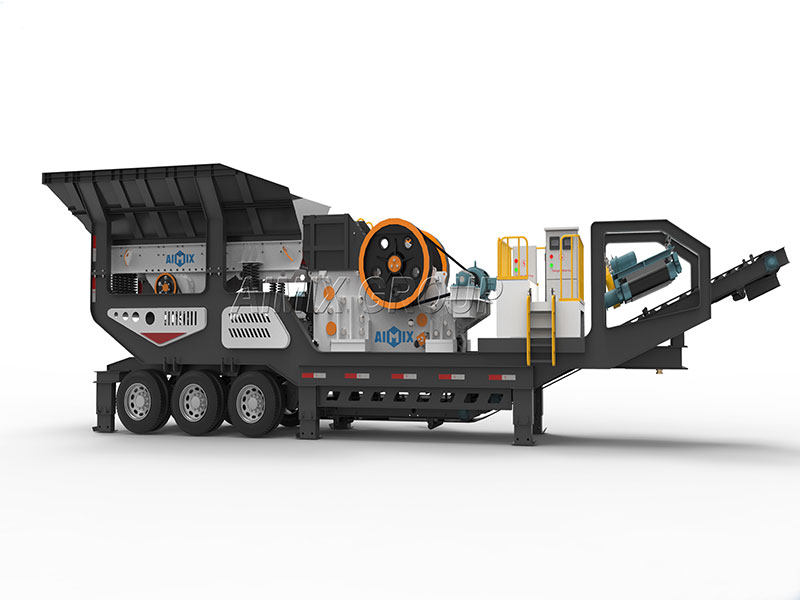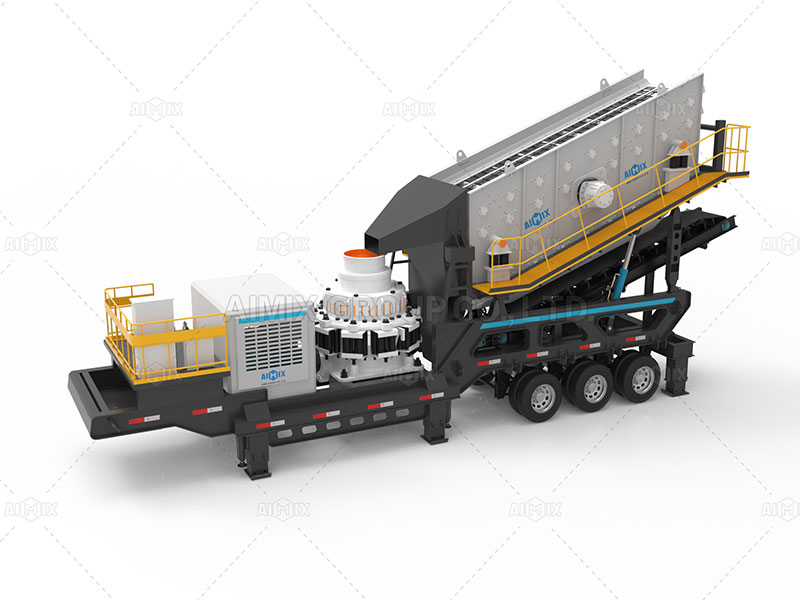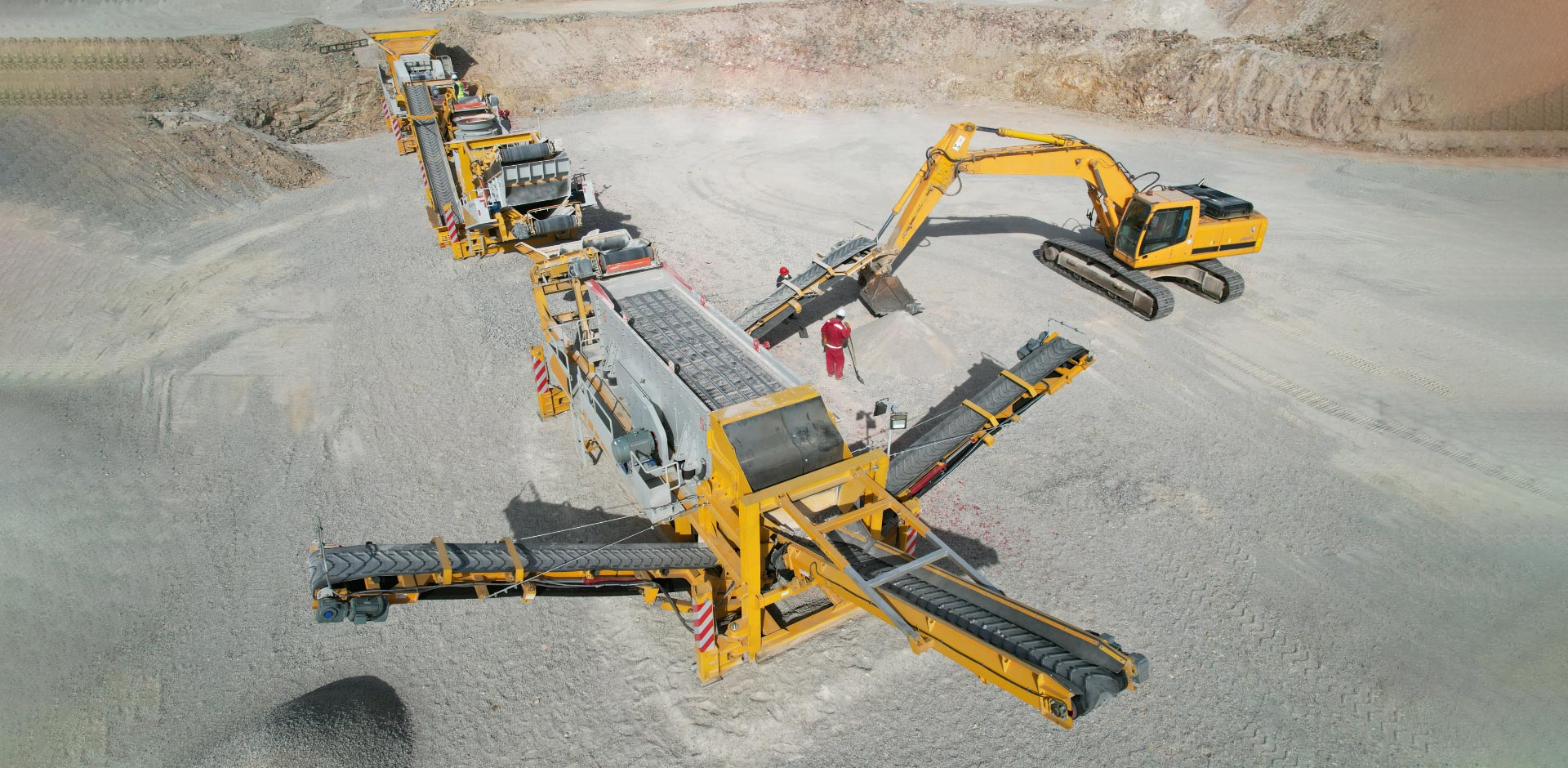The construction industry has witnessed a remarkable evolution in stone crusher plant technology, transforming the way raw materials are mined, processed, and utilized in various construction applications.
Early Stone Crushing Innovations:
The roots of stone crusher plants can be traced back to the early days of mining and construction. Simple hand-operated devices were used to crush rocks and stones manually, providing the foundation for the development of more sophisticated stone crushing plants. These early innovations laid the groundwork for the transformative journey of stone crusher plant technology.

Introduction of Jaw Crushers:
The advent of jaw crushers marked a significant leap in stone crushing technology. Introduced in the mid-19th century, jaw crusher on tracks revolutionized the crushing process by utilizing a fixed and movable jaw plate mechanism. This innovation allowed for the efficient reduction of large rocks into smaller, more manageable sizes, laying the foundation for modern stone crusher plant design.
Gyratory Crushers and Cone Crushers:
Following the success of jaw crushers, gyratory crushers and cone crushers emerged, further enhancing the efficiency of stone crushing. Gyratory crushers introduced the concept of crushing by gyrating, while cone crushers refined the process with the utilization of a rotating mantle. These advancements improved the uniformity of crushed materials and expanded the range of applications for stone crusher plants.
Impact Crushers:
The development of impact crushers brought a new dimension to stone crushing technology. Impact crushers operate on the principle of impact and attrition, where the material is crushed by the impact of hammers or blow bars against the stone. This technology allowed for the production of finely crushed aggregates, ideal for various construction applications.
Mobile Stone Crusher Plants:
The advent of mobile technology ushered in a new era for stone crusher plants. Mobile crushers, equipped with tracks or wheels, provided unprecedented mobility, allowing them to be easily transported between job sites. This mobility eliminated the need for dedicated transport vehicles, streamlining logistics and increasing operational flexibility.

Automation and Control Systems:
The integration of automation and control systems marked a significant milestone in stone crusher plant development. Modern crushers are equipped with advanced control panels and sensors that monitor various parameters in real-time. This technology allows for precise control over the crushing process, ensuring optimal performance, efficiency, and safety.
Efficient Screening and Separation:
To enhance the efficiency of stone crusher plants, efficient screening and separation technologies were introduced. Vibrating screens and separators help classify crushed materials based on size, allowing for the production of different grades of aggregates. This capability enhances the versatility of stone crusher plants, meeting the diverse needs of construction projects.
Environmentally Friendly Solutions:
As environmental awareness grew, stone crusher plants evolved to incorporate eco-friendly features. Dust suppression systems and noise reduction technologies became integral components, addressing environmental concerns associated with crushing operations. These advancements align with the industry’s commitment to sustainable and responsible construction practices.
Integration of Energy-Efficient Solutions:
In recent years, there has been a growing emphasis on energy efficiency in mobile crusher plants development. Energy-efficient crushers, along with innovations in power management and utilization, contribute to reduced operational costs and a smaller environmental footprint. This focus on sustainability positions stone crusher plants as key players in responsible construction practices.
Digitalization and Connectivity:
The ongoing digital revolution has found its way into stone crusher plants, bringing about enhanced connectivity and data-driven insights. Digitalization allows for real-time monitoring, predictive maintenance, and remote operation of crushers, optimizing performance and minimizing downtime. This interconnected approach to stone crushing reflects the industry’s commitment to embracing cutting-edge technologies.
Conclusion:
The evolution of stone crusher plants exemplifies the dynamic nature of the construction industry. From simple manual devices to the advanced, automated, and environmentally conscious systems of today, limestone crusher plants have continuously adapted to meet the changing needs of construction projects. The journey through development highlights a commitment to efficiency, sustainability, and innovation, shaping the future of stone crushing technology as an integral part of the construction landscape.
